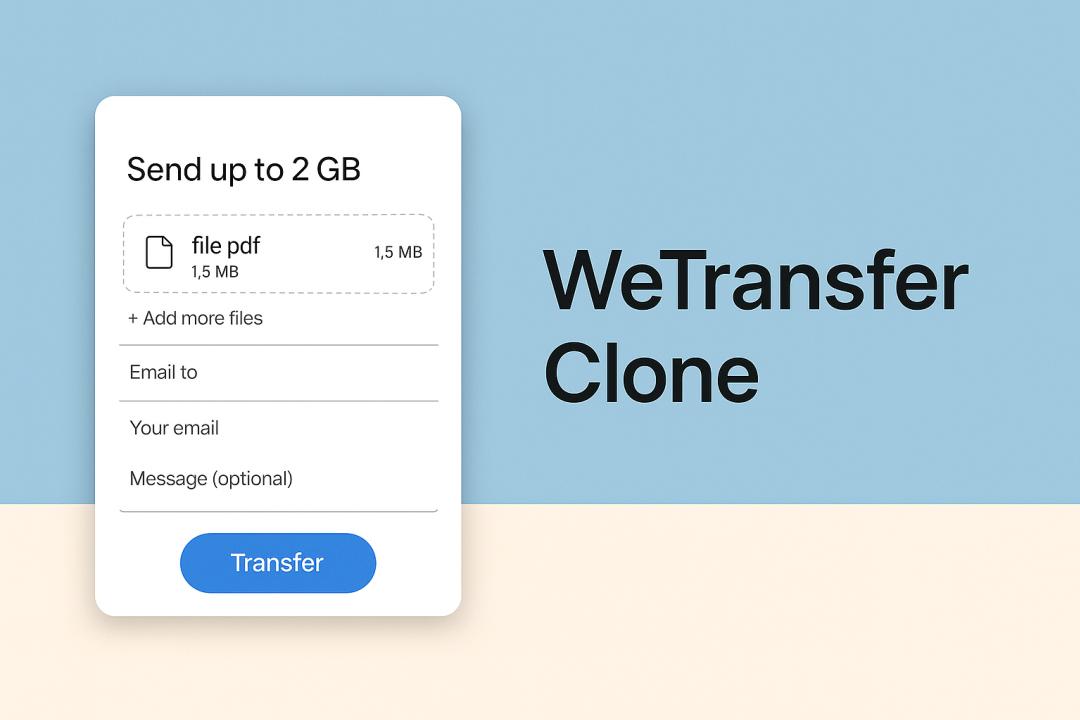In today's fast-paced digital ecosystem, file sharing has become a fundamental necessity for individuals and businesses alike. WeTransfer emerged as a favorite for many due to its simplicity, speed, and no-frills file transfer mechanism. If you're an entrepreneur or developer looking to create your own WeTransfer clone, this article will guide you through the essentials—its features, benefits, and viable business models.
What Is a WeTransfer Clone?
A WeTransfer clone is a file transfer platform that mimics the core functionalities of WeTransfer. It allows users to upload large files and share them via a generated link or email without the need for signups or complex UI. The goal is to offer a streamlined, efficient solution for transferring large files securely over the internet.
Key Features of a WeTransfer Clone
To ensure your WeTransfer clone delivers a seamless user experience, it should incorporate the following features:
1. Drag-and-Drop Upload
Provide a user-friendly interface where users can drag and drop files into the platform for instant uploading.
2. Email and Link Sharing
Let users share uploaded files either via direct email or by generating a download link.
3. Password Protection
Allow users to secure their files with passwords to ensure only authorized individuals can access them.
4. Expiry Timer
Enable file links to expire after a defined duration for added security and to save server storage.
5. Cloud Storage Integration
Integrate with cloud services (like AWS, Google Cloud, or Azure) to manage files efficiently and ensure high uptime.
6. Admin Dashboard
Give administrators the ability to manage users, monitor uploads, and control bandwidth and storage usage.
7. Multi-language and Multi-currency Support
Ideal for reaching a global audience, especially if you plan on monetizing the platform.
8. Advanced Analytics
Offer file access stats, geolocation data, and download history for professional users and enterprises.
Benefits of Creating a WeTransfer Clone
Security
Implement end-to-end encryption and data retention policies to protect sensitive files.
Customizability
You can tailor the platform to meet niche market needs, such as secure B2B communications or creative content sharing.
Revenue Opportunities
From freemium models and ad placements to subscriptions and enterprise licensing, monetization options are varied and scalable.
Branding Potential
A clone allows you to build your own branded file-sharing platform, enhancing brand visibility and trust.
Business Model Options
Here are some viable ways to monetize your WeTransfer clone
Freemium Model: Offer basic features for free with premium upgrades (e.g., larger file limits, no ads, longer storage durations).
Subscription Plans: Monthly or annual plans for professionals and businesses.
Ad-Based Revenue: Display ads to free-tier users for revenue generation.
Enterprise Licensing: Provide white-label or on-premise versions for large organizations.
Tech Stack Recommendation
To ensure performance and scalability, consider the following tech stack:
Frontend: React.js or Vue.js for a dynamic and responsive UI
Backend: Node.js, Python (Django/Flask), or PHP (Laravel)
Database: MongoDB or PostgreSQL
Cloud Storage: AWS S3, Google Cloud Storage
Security: SSL Encryption, OAuth, and GDPR-compliant policies
Conclusion
Creating a WeTransfer clone is not just about replicating functionality—it’s about enhancing user experience, adding value, and creating a scalable business model. With the right features, robust tech stack, and a clear monetization strategy, your file-sharing platform can offer a compelling alternative to WeTransfer. Whether you're targeting creatives, corporations, or casual users, the market demand for easy and secure file transfer solutions is only growing.









